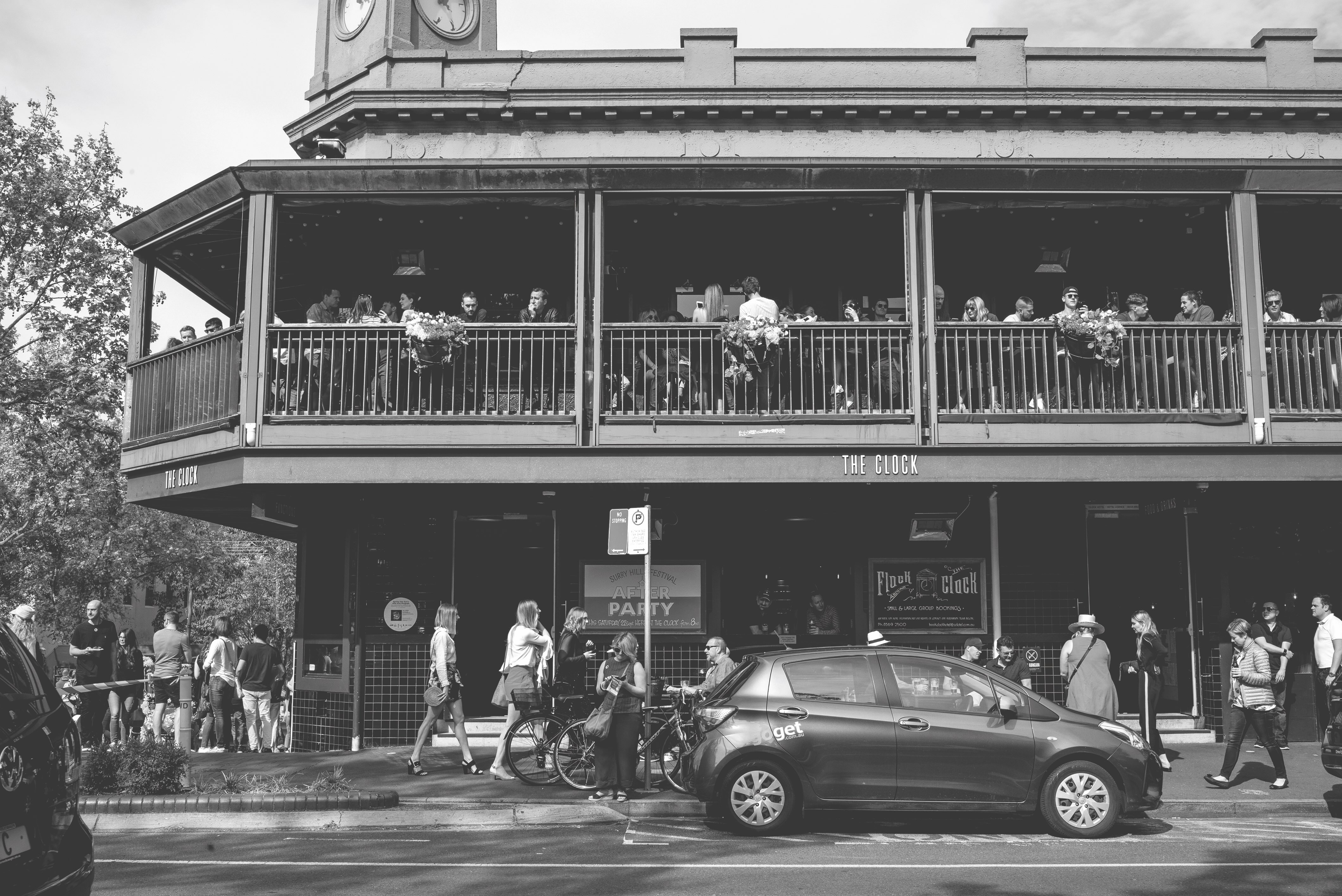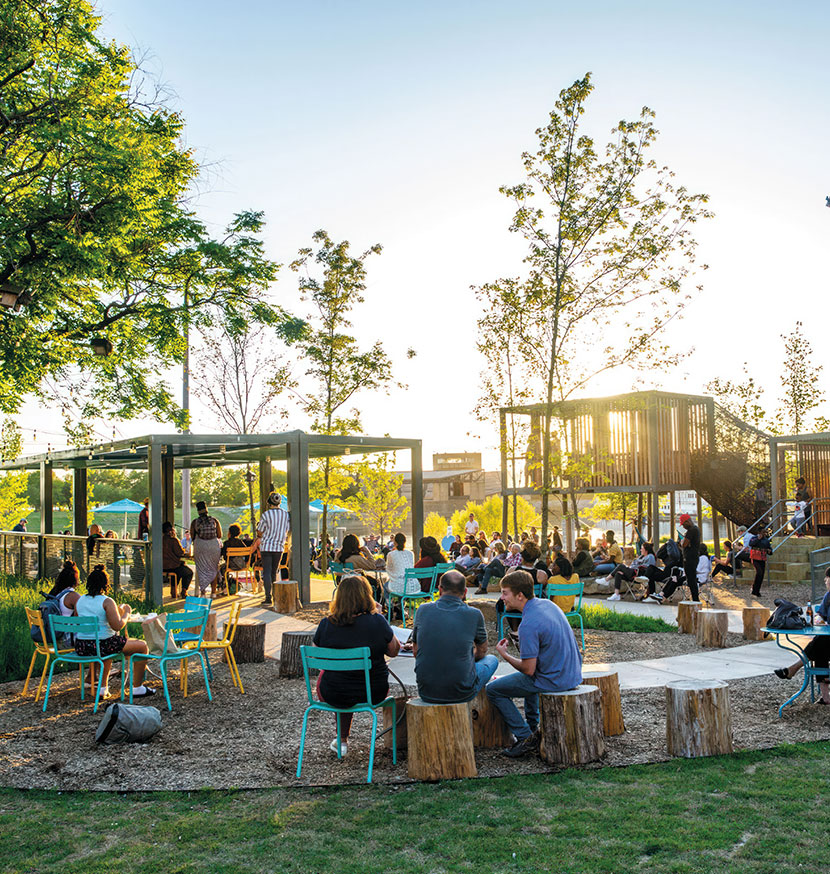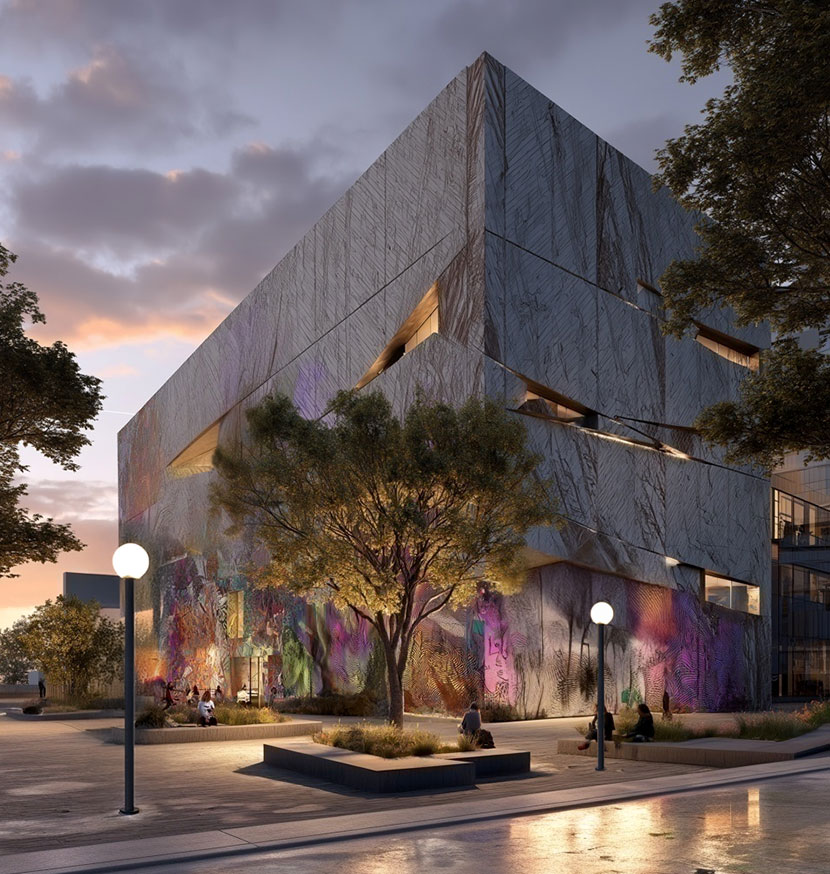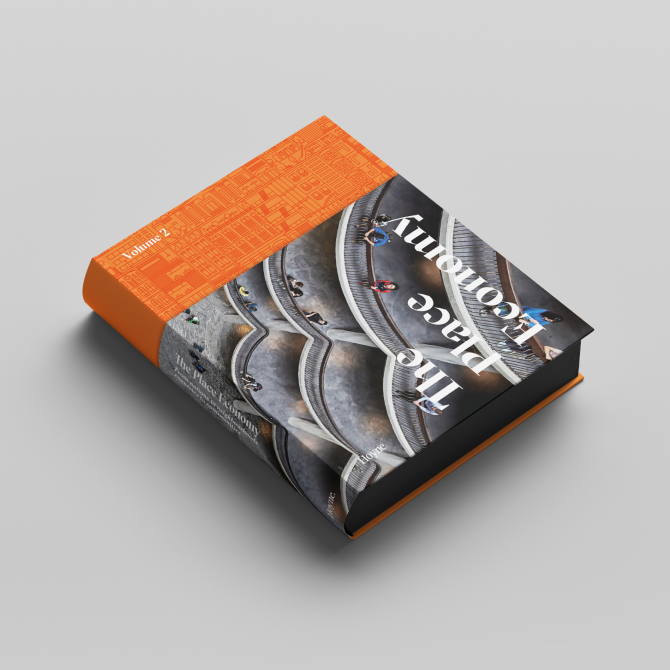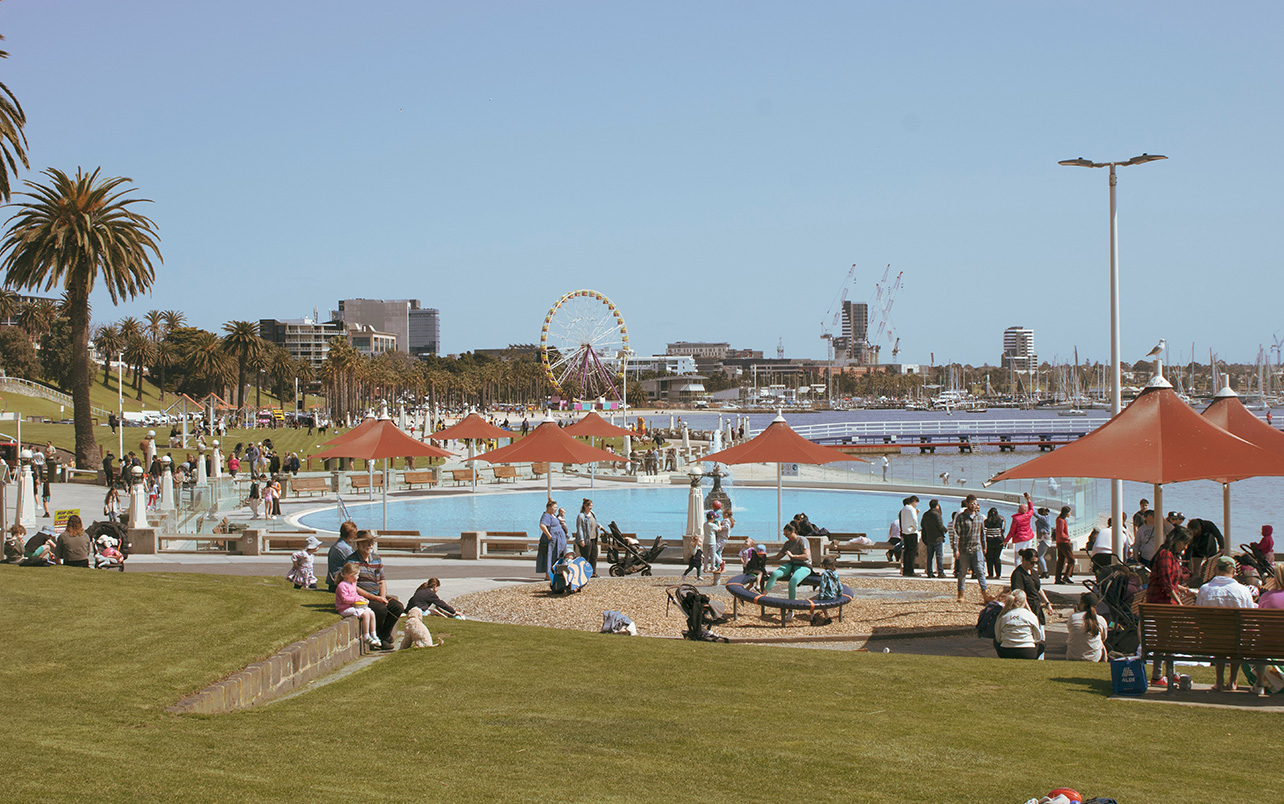
Geelong can be brilliant or bland. The choice is now.
History shows us that places thrive when they embrace density, culture and connectivity. The question for Geelong isn’t whether it can do this. It’s whether it will, writes Andrew Hoyne.
Geelong is sitting on a goldmine. A city that’s comparably affordable, reasonably well-connected and attractive to young people doesn’t come along every day. This is the stuff urban success stories are built on. But let’s be clear: momentum can vanish in a heartbeat. Cities don’t automatically become vibrant. They don’t automatically become prosperous. They only succeed when bold, strategic decisions are made early. Geelong has a lot going for it, so how can we make sure the opportunity is not lost?
Step one: Know who you are
Every successful city starts with an understanding of itself. You can’t future-proof Geelong if you don’t first define what makes it unique. This is about more than ticking boxes on a planning document, it’s about identity.
There are four questions Geelong must ask, and answer, with honesty and ambition:
- What are Geelong’s existing assets? The waterfront, the port, the university, Avalon Airport, proximity to Melbourne, the Bellarine, the Great Ocean Road. These are real advantages that other cities would kill for. But assets are meaningless if they’re not leveraged.
- What competitive differences can Geelong own? Every city claims to be “liveable” or “vibrant.” That’s wallpaper. But what makes Geelong unmistakable? Its scale, its design heritage, its position as a gateway between Melbourne and the west? This is the DNA that needs to be amplified.
- What should Geelong be famous for? Not just to its residents, but to all of Victoria and beyond. Austin built a global reputation on music and culture. Bilbao transformed itself with art and architecture. What’s Geelong’s claim to fame?
- What challenges can Geelong solve for the state? Every thriving city is useful. What role can Geelong play for Victoria that Melbourne cannot? Housing affordability? Port and logistics? A new kind of cultural magnet?
If Geelong doesn’t answer these questions, it risks being generic. And generic cities don’t thrive, they survive.
Step two: Get everyone on the same page
Government, community, developers. These groups love to clash. But without unity, nothing gets delivered. Government’s job isn’t to strangle projects with red tape or dream up grand plans for 2050. It’s to set a bold five-year vision, create a framework that opens up opportunity, and incentivise the market to act.
Developers will show up if there’s certainty. Communities will believe in the vision if it’s clear and authentic.
Here’s what alignment looks like:
- Government tells an optimistic story. People need to believe in the future of their city. If the message is muddled or defeatist, no one will invest.
- Five-year targets, not 2050 daydreams. Long-term visions are fine, but they’re too easy to kick down the road. Geelong needs milestones it can hit and celebrate.
- Cut red tape, create frameworks. Stop burdening developers with endless approvals. Start creating opportunities they can act on.
- Incentivise delivery. Whether it’s housing, jobs or investment, government should reward the market for contributing to Geelong’s vision.
Without alignment, Geelong gets paralysis. With it, Geelong gets lift-off.
Density or bust
Let’s stop sugar-coating it: Geelong’s CBD is empty. In the 2021 census, the population of central Geelong was a mere 5,811 people. This works out as about 2% of Geelong’s total population. Compare that to Newcastle (7%) and Wollongong (8%), and it’s obvious why the CBD feels lifeless.
Here’s the simple truth: you can’t have vibrancy without density. People want lively streets, buzzing restaurants, and safe public spaces, but those things only exist if people actually live there. The current stretch goal of 16,000 new residents by 2050, is far too timid. It assumes the CBD stays as unappealing as it is today. But if Geelong made the centre vibrant, desirable and safe, that figure could triple. Forty-eight thousand people living in the CBD by 2050 is achievable.
The challenge now is feasibility. In Geelong, houses are still cheaper than apartments. That’s a market signal no one can ignore. Which means Council has to step up.
Councils can de-risk delivery by expanding and publicising fast-track pathways for CBD projects that comply with the Framework Plan. Give developers and lenders certainty with service-level timelines lenders can underwrite. Codify rules on reduced parking and end-of-trip facilities for sites within the activity core and near high-frequency transit. Stop wasting everyone’s time negotiating waivers one scheme at a time.
Councils can also create demand confidence by delivering a catalyst. Market Square is a good example; it could be pivotal, not just as retail, but as a magnet for footfall and neighbourhood amenity. But right now uncertainty has paralysed adjoining private sites.
Finally, match the promise with delivery. Keep upgrading the public realm with a residential-living lens. That means tackling noise, wind, shade, lighting, and micro-mobility so apartment living feels like an upgrade, not a compromise.
This is the tipping point and without council leadership to shift feasibility, Geelong risks waiting decades for its CBD to come alive.
Don’t bet the farm on government offices
If Geelong thinks it can rely on government tenants to fill up office space, it’s in trouble. Even in the unlikely instance that government could make the numbers, they just create an entirely different problem, because public servants generally don’t spend on drinks, lunch or retail. They don’t linger after work for beers or dinner. They’re CBD killers.
What Geelong needs is mixed-use development, buzzing laneways, and workplaces designed to attract the private sector. Look at Austin, Texas. In the 1970s it was a sleepy town. Then it decided to build its brand around culture. Today? It’s one of America’s hottest cities for talent and investment. (Though let’s acknowledge they completely failed to plan for housing and it’s now crazy expensive).
Bring in the right kind of people first and companies will chase them.
Public transport is non-negotiable
If Geelong doesn’t deliver a serious public transport network that links suburbs to each other, not just to the CBD, it will fail. No transport = no fairness. No transport = no opportunity. This is the foundation of an inclusive, modern city.
Stop hoping, start curating
If you think people will just show up to Geelong’s CBD or waterfront, think again. People don’t gamble their time. They go where they know they’ll have a great experience.
That means a curated mix of tenants. A 365-day activation plan. And spaces that work as hard between the buildings as the buildings themselves.
Take the waterfront. Right now, it’s a weekend attraction. But it should be Geelong’s beating heart with festivals, concerts, paddleboarding, dining, culture, seven days and seven nights.
Precincts must collaborate, not compete
Precincts aren’t silos. They’re ecosystems. One thriving sector should fuel another. Locking land use into rigid boxes suffocates growth.
Geelong should embrace messiness. Overlap industries. Blur the lines. That’s how real innovation happens. Whereas traditional zoning to keep everything well apart is mired in failure.
Repurpose or Rust
Geelong is littered with underused assets. Old government buildings. Car parks. Empty rooftops. These are opportunities hiding in plain sight.
If the business case stacks up but government lacks the guts, give it a development approval and let the market get on with it. Wasted land is wasted potential.
Traderhoods: Reinventing industry
Geelong’s past was wool and cars. That era is over. The future is industrial land that feels alive. We call them Traderhoods. These aren’t soulless industrial parks, but communities of makers, traders and businesses that employ people while also attracting activity and pride. Imagine places that are walkable, mixed-use, diverse, buzzing with food, retail and small-scale manufacturing.
That’s how you turn an industrial site into a destination. That’s how you future-proof Geelong’s employment base. Just look at the success of Federal Mills. More of this please.
Avoid suburban wastelands
Beyond the CBD, Geelong is exploding with house-and-land development. Nearly 19,000 residential lots are already approved, with another 42,700 planned. On paper, that’s good news for supply. But without vision, it’s a disaster waiting to happen
The risk? Endless rows of houses, disconnected from jobs, transport and amenity. Soulless suburbs that condemn residents to long commutes, poor services, and little sense of belonging. That’s not growth, that’s decline by stealth.
The solution is to think in terms of villages. Each new community should have its own distinct character and role within the region. Not cookie-cutter suburbs, but places people are proud to live in.
And each village must deliver on four essentials:
- Walkability and connectivity. Streets designed for people, not just cars.
- Early delivery of amenity. If you think it’s too early for shops, schools or parks, it’s probably exactly the right time.
- Diversity and inclusivity. Communities should be built for a wide range of people, not just one demographic.
- Local activity centres. Spaces that provide daily life and vibrancy, not just houses.
If Geelong doesn’t demand this standard, it risks creating a ring of suburban wastelands.
Learn from Detroit, act for Geelong
Detroit’s story is a warning and an inspiration. Like Geelong, it was a car-making city. Like Geelong, it’s a port city. And like Geelong, it’s a UNESCO City of Design. Detroit collapsed because it clung to the past. Now it’s reinventing itself through design, culture and creativity.
Geelong has the chance to skip the collapse and move straight to reinvention.
The time for boldness is now
Geelong is at a crossroads. It can take the safe path with slow growth, half-measures, bland suburbs and a weak CBD. Or it can choose courage: density, culture, connectivity, Traderhoods, curated precincts, and a city-wide vision that excites people to live, work and invest here.
Cities don’t get second chances. Geelong has one shot at greatness. Don’t mess it up.
It’s time to see change.
See the future take shape.
See the new wave – and ride the next.
See opportunity – and conquer it.
See connections – and make them.
See history – but be the future.
See beauty – yet be bold.
It’s time to take the lead.
Geelong. See change. Be change.
Back